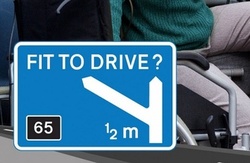
Organisation: Parliamentary Advisory Council for Transport Safety
Date uploaded: 15th March 2016
Date published/launched: March 2016

Among its key findings is a suggestion that lowering the legal drink drive limit to 50mg/100ml could save an estimated 25 lives and prevent 95 serious injuries annually.
The report also recommends that the DfT and Home Office should focus on ‘type approval’ of roadside evidential breath testing equipment to ‘save police time’, and says that higher levels of enforcement would act as a deterrent to drink drivers.
Interestingly, the report also suggests that widespread breath-testing following crashes could lead to alcohol being over-attributed as the key factor leading to a collision.
The report also calls for wider use of alcolocks by fleet operators and in the rehabilitation of previous drink-drive offenders.
With regard to drug driving, the report cites a ‘zero tolerance approach to illicit drugs which is political rather than road safety based’. It says the incidence of illicit drugs in both fatal and non-fatal crashes is around 6%.
With regard to driver fatigue, the report says it is now ‘widely accepted that fatigue is a major contributory factor particularly in the early hours of the morning and on long distance journeys on major roads or motorways’. The authors call for Highways England and other strategic road authorities to ‘consider design treatments that can break up the monotony of long-distance driving’.
With regard to eyesight, the report says there is ‘no strong evidence that deficiencies in eyesight present a major road safety risk’. However, the authors go on to say with an ageing population, eyesight is likely to increase as a risk factor, and that ‘current procedures are not sufficient to identify those with inadequate eyesight’.
On mental or physical illness or disability – including brain injury, Parkinson’s, dementia, multiple sclerosis and stroke – the report says many of these conditions are age-related and set to increase with an ageing population in the next 20 years. It also says ‘evidence points to an increase in collision involvement rates among older drivers’.
With no single set of tests to assess fitness to drive currently available, the report calls for the government to fund research into developing a ‘clinically viable desk based assessment of driving safety’.
In circumstances where someone is advised to stop driving, the report says they should be ‘supported with alternatives to maintain mobility and avoid social exclusion’ – and suggests that autonomous cars may have a role to play in supporting the safer mobility of people with cognitive impairment.
FOOTNOTE
Fit to Drive? is written by Oliver Carsten, professor of transport studies at Leeds University; Dan Campsall, director of Road Safety Analysis; Nicola Christie, senior lecturer at UCL; and Rob Tunbridge, independent research professional on behalf of the PACTS Road User Behaviour Working Party.
For more information contact:
